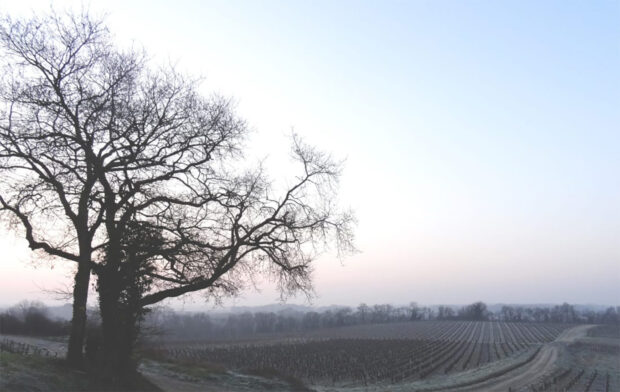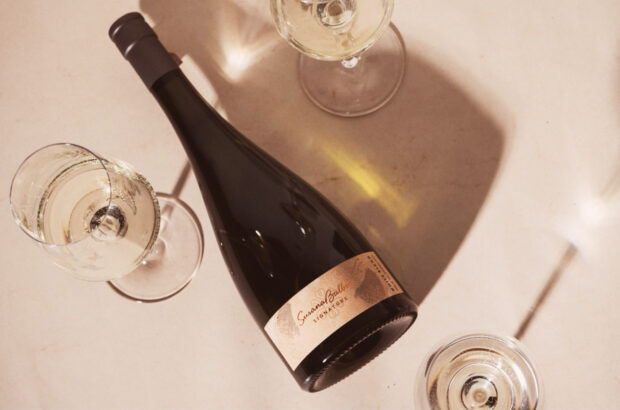In one sense, Champagne is easy to understand. Is there another wine appellation with such a strong, unified brand? For all the popularity of the world’s other sparkling wines, whether Prosecco, Cava or English sparkling, Champagne’s promise is simple: spend a little more and get the real thing.
It’s even more of a disappointment, then, when a glass of Champagne doesn’t turn out to be quite what we were hoping for. Despite the reassuring unity of brand Champagne, the place is a universe all of its own, with more than 1,000 producers (split between houses, cooperatives and grower-producers) who make wines from seven grape varieties across 34,000ha of land spread over a distance equal to that between London and Birmingham.
How, then, to make new discoveries, when there’s often little obvious on the label to offer clues, other than the word Champagne itself? In the article that follows, we offer a guide to discovering new Champagnes you might like, based on your style preferences.
Scroll down for 15 Champagne suggestions across the style spectrum
{"content":"PC9wPgo8aDI+VGhlIEdyYW5kZXMgTWFycXVlczwvaDI+CjxwPlRoZSBjaGFydC10b3BwZXJzIG9mIHRoZSBDaGFtcGFnbmUgd29ybGQsIHRoZSBncmFuZGVzIG1hcnF1ZXMgYXJlIHRoZSBmYW1vdXMgPGVtPm1haXNvbnM8L2VtPiAo4oCYaG91c2Vz4oCZKSDigJMgZnJvbSB0aGUgbGlrZXMgb2YgTW\/Dq3QgZXQgQ2hhbmRvbiB0byBCb2xsaW5nZXIsIExvdWlzIFJvZWRlcmVyIGFuZCBtb3JlIOKAkyB0aGF0IGRvbWluYXRlIHNhbGVzIGFuZCByZXByZXNlbnQgbmVhcmx5IHRocmVlLSBxdWFydGVycyBvZiB0aGUgcmVnaW9u4oCZcyBnbG9iYWwgc2hpcG1lbnRzIGFuZCA4NiUgb2YgZXhwb3J0cyBpbiAyMDIzLCBhY2NvcmRpbmcgdG8gdGhlIENvbWl0w6kgQ2hhbXBhZ25lIGJvZHkuPC9wPgo8cD48ZGl2IGNsYXNzPSJhZC1jb250YWluZXIgYWQtY29udGFpbmVyLS1tb2JpbGUiPjxkaXYgaWQ9InBvc3QtaW5saW5lLTIiIGNsYXNzPSJpcGMtYWR2ZXJ0Ij48L2Rpdj48L2Rpdj48L3A+CjxwPkV2ZXJ5IGhvdXNlIG9mZmVycyB1cCBhIHJhbmdlIG9mIGNvbnRyYXN0aW5nIHdpbmVzIChhbmQgdGhlcmXigJlzIGFsd2F5cyBhbiBlbGVtZW50IG9mIHN1YmplY3Rpdml0eSB3aGVuIHRhbGtpbmcgYWJvdXQgaG91c2Ugc3R5bGVzKSwgYnV0IHdoZXJlIHRoZXkgc2l0IG9uIG91ciBzdHlsZSBndWlkZSBjaGFydCBvZmZlcnMgYW4gYWNjZXNzaWJsZSwgcXVpY2sga2V5IHRvIHRoZSBnZW5lcmFsIGFwcHJvYWNoIG9mIGVhY2ggaG91c2UuPC9wPgo8cD5JbnNwaXJlZCBieSB0aGUgaG91c2Ugc3R5bGVzIG9mIHRoZSBncmFuZGVzIG1hcnF1ZXMsIG91ciBkaXNjb3Zlcnkgem9uZXMgc3VnZ2VzdCBzbWFsbGVyIGhvdXNlcywgaW5kZXBlbmRlbnQgcHJvZHVjZXJzIGFuZCBncm93ZXJzIHRoYXQgc2hhcmUgc29tZSBjaGFyYWN0ZXJpc3RpY3Mgd2l0aCB0aGVpciBncmFuZGUgbWFycXVlIG5laWdoYm91cnMgaW4gdGhhdCBwYXJ0aWN1bGFyIHNlY3Rpb24gb2YgdGhlIHN0eWxlIGd1aWRlLjwvcD4KPHA+PGltZyBmZXRjaHByaW9yaXR5PSJoaWdoIiBkZWNvZGluZz0iYXN5bmMiIGNsYXNzPSJsYXp5bG9hZCBibHVyLXVwIGFsaWdubm9uZSB3cC1pbWFnZS01NDM3NjQgc2l6ZS1mdWxsIiBkYXRhLXByb2Nlc3NlZCBzcmM9Imh0dHBzOi8vd3d3LmRlY2FudGVyLmNvbS93cC1jb250ZW50L3RoZW1lcy9zaW1iYS10aGVtZS9hc3NldHMvaW1hZ2VzL3BsYWNlaG9sZGVyLnBuZyIgZGF0YS1zcmM9Imh0dHBzOi8va2V5YXNzZXRzLnRpbWVpbmN1ay5uZXQvaW5zcGlyZXdwL2xpdmUvd3AtY29udGVudC91cGxvYWRzL3NpdGVzLzM0LzIwMjQvMTEvREVDMzA0LmNoYW1wYWduZV9zdHlsZXMuMjQxMDA4X2RlY2FudGVyX25ldy0xLmpwZyIgYWx0PSIiIHdpZHRoPSIxMzAwIiBoZWlnaHQ9Ijg2MCIgZGF0YS1zaXplcz0iYXV0byIgZGF0YS1zcmNzZXQ9Imh0dHBzOi8va2V5YXNzZXRzLnRpbWVpbmN1ay5uZXQvaW5zcGlyZXdwL2xpdmUvd3AtY29udGVudC91cGxvYWRzL3NpdGVzLzM0LzIwMjQvMTEvREVDMzA0LmNoYW1wYWduZV9zdHlsZXMuMjQxMDA4X2RlY2FudGVyX25ldy0xLmpwZyAxMzAwdywgaHR0cHM6Ly9rZXlhc3NldHMudGltZWluY3VrLm5ldC9pbnNwaXJld3AvbGl2ZS93cC1jb250ZW50L3VwbG9hZHMvc2l0ZXMvMzQvMjAyNC8xMS9ERUMzMDQuY2hhbXBhZ25lX3N0eWxlcy4yNDEwMDhfZGVjYW50ZXJfbmV3LTEtMzAweDE5OC5qcGcgMzAwdywgaHR0cHM6Ly9rZXlhc3NldHMudGltZWluY3VrLm5ldC9pbnNwaXJld3AvbGl2ZS93cC1jb250ZW50L3VwbG9hZHMvc2l0ZXMvMzQvMjAyNC8xMS9ERUMzMDQuY2hhbXBhZ25lX3N0eWxlcy4yNDEwMDhfZGVjYW50ZXJfbmV3LTEtNjMweDQxNy5qcGcgNjMwdywgaHR0cHM6Ly9rZXlhc3NldHMudGltZWluY3VrLm5ldC9pbnNwaXJld3AvbGl2ZS93cC1jb250ZW50L3VwbG9hZHMvc2l0ZXMvMzQvMjAyNC8xMS9ERUMzMDQuY2hhbXBhZ25lX3N0eWxlcy4yNDEwMDhfZGVjYW50ZXJfbmV3LTEtMTM1eDg5LmpwZyAxMzV3LCBodHRwczovL2tleWFzc2V0cy50aW1laW5jdWsubmV0L2luc3BpcmV3cC9saXZlL3dwLWNvbnRlbnQvdXBsb2Fkcy9zaXRlcy8zNC8yMDI0LzExL0RFQzMwNC5jaGFtcGFnbmVfc3R5bGVzLjI0MTAwOF9kZWNhbnRlcl9uZXctMS0zMjB4MjEyLmpwZyAzMjB3LCBodHRwczovL2tleWFzc2V0cy50aW1laW5jdWsubmV0L2luc3BpcmV3cC9saXZlL3dwLWNvbnRlbnQvdXBsb2Fkcy9zaXRlcy8zNC8yMDI0LzExL0RFQzMwNC5jaGFtcGFnbmVfc3R5bGVzLjI0MTAwOF9kZWNhbnRlcl9uZXctMS02MjB4NDEwLmpwZyA2MjB3LCBodHRwczovL2tleWFzc2V0cy50aW1laW5jdWsubmV0L2luc3BpcmV3cC9saXZlL3dwLWNvbnRlbnQvdXBsb2Fkcy9zaXRlcy8zNC8yMDI0LzExL0RFQzMwNC5jaGFtcGFnbmVfc3R5bGVzLjI0MTAwOF9kZWNhbnRlcl9uZXctMS05MjB4NjA5LmpwZyA5MjB3LCBodHRwczovL2tleWFzc2V0cy50aW1laW5jdWsubmV0L2luc3BpcmV3cC9saXZlL3dwLWNvbnRlbnQvdXBsb2Fkcy9zaXRlcy8zNC8yMDI0LzExL0RFQzMwNC5jaGFtcGFnbmVfc3R5bGVzLjI0MTAwOF9kZWNhbnRlcl9uZXctMS0xMjIweDgwNy5qcGcgMTIyMHciIHNpemVzPSIobWF4LXdpZHRoOiAxMzAwcHgpIDEwMHZ3LCAxMzAwcHgiIC8+PC9wPgo8ZGl2IGNsYXNzPSJhZC1jb250YWluZXIgYWQtY29udGFpbmVyLS1tb2JpbGUiPjxkaXYgaWQ9InBvc3QtaW5saW5lLTMiIGNsYXNzPSJpcGMtYWR2ZXJ0Ij48L2Rpdj48L2Rpdj4KPGhyPgo8ZGl2IGNsYXNzPSJicmVha291dCBwYWxldHRlLWEgcGFuZWwgcGFuZWwtZGVmYXVsdCI+PGRpdiBjbGFzcz0icGFuZWwtYm9keSI+PGRpdiBjbGFzcz0nYnJlYWtvdXQtY29udGVudCc+PC9wPgo8cD48aW1nIGRlY29kaW5nPSJhc3luYyIgY2xhc3M9Imxhenlsb2FkIGJsdXItdXAgYWxpZ25ub25lIHNpemUtbWVkaXVtIHdwLWltYWdlLTU0MzgyMSIgZGF0YS1wcm9jZXNzZWQgc3JjPSJodHRwczovL3d3dy5kZWNhbnRlci5jb20vd3AtY29udGVudC90aGVtZXMvc2ltYmEtdGhlbWUvYXNzZXRzL2ltYWdlcy9wbGFjZWhvbGRlci5wbmciIGRhdGEtc3JjPSJodHRwczovL2tleWFzc2V0cy50aW1laW5jdWsubmV0L2luc3BpcmV3cC9saXZlL3dwLWNvbnRlbnQvdXBsb2Fkcy9zaXRlcy8zNC8yMDI0LzExL0RFQzMwNC5jaGFtcGFnbmVfc3R5bGVzLmRpc2NvdmVyeV96b25lXzEtMS0zMDB4MjU5LmpwZyIgYWx0PSIiIHdpZHRoPSIzMDAiIGhlaWdodD0iMjU5IiBkYXRhLXNpemVzPSJhdXRvIiBkYXRhLXNyY3NldD0iaHR0cHM6Ly9rZXlhc3NldHMudGltZWluY3VrLm5ldC9pbnNwaXJld3AvbGl2ZS93cC1jb250ZW50L3VwbG9hZHMvc2l0ZXMvMzQvMjAyNC8xMS9ERUMzMDQuY2hhbXBhZ25lX3N0eWxlcy5kaXNjb3Zlcnlfem9uZV8xLTEtMzAweDI1OS5qcGcgMzAwdywgaHR0cHM6Ly9rZXlhc3NldHMudGltZWluY3VrLm5ldC9pbnNwaXJld3AvbGl2ZS93cC1jb250ZW50L3VwbG9hZHMvc2l0ZXMvMzQvMjAyNC8xMS9ERUMzMDQuY2hhbXBhZ25lX3N0eWxlcy5kaXNjb3Zlcnlfem9uZV8xLTEtNjMweDU0My5qcGcgNjMwdywgaHR0cHM6Ly9rZXlhc3NldHMudGltZWluY3VrLm5ldC9pbnNwaXJld3AvbGl2ZS93cC1jb250ZW50L3VwbG9hZHMvc2l0ZXMvMzQvMjAyNC8xMS9ERUMzMDQuY2hhbXBhZ25lX3N0eWxlcy5kaXNjb3Zlcnlfem9uZV8xLTEtMTM1eDExNi5qcGcgMTM1dywgaHR0cHM6Ly9rZXlhc3NldHMudGltZWluY3VrLm5ldC9pbnNwaXJld3AvbGl2ZS93cC1jb250ZW50L3VwbG9hZHMvc2l0ZXMvMzQvMjAyNC8xMS9ERUMzMDQuY2hhbXBhZ25lX3N0eWxlcy5kaXNjb3Zlcnlfem9uZV8xLTEtMzIweDI3Ni5qcGcgMzIwdywgaHR0cHM6Ly9rZXlhc3NldHMudGltZWluY3VrLm5ldC9pbnNwaXJld3AvbGl2ZS93cC1jb250ZW50L3VwbG9hZHMvc2l0ZXMvMzQvMjAyNC8xMS9ERUMzMDQuY2hhbXBhZ25lX3N0eWxlcy5kaXNjb3Zlcnlfem9uZV8xLTEtNjIweDUzNS5qcGcgNjIwdywgaHR0cHM6Ly9rZXlhc3NldHMudGltZWluY3VrLm5ldC9pbnNwaXJld3AvbGl2ZS93cC1jb250ZW50L3VwbG9hZHMvc2l0ZXMvMzQvMjAyNC8xMS9ERUMzMDQuY2hhbXBhZ25lX3N0eWxlcy5kaXNjb3Zlcnlfem9uZV8xLTEtOTIweDc5My5qcGcgOTIwdywgaHR0cHM6Ly9rZXlhc3NldHMudGltZWluY3VrLm5ldC9pbnNwaXJld3AvbGl2ZS93cC1jb250ZW50L3VwbG9hZHMvc2l0ZXMvMzQvMjAyNC8xMS9ERUMzMDQuY2hhbXBhZ25lX3N0eWxlcy5kaXNjb3Zlcnlfem9uZV8xLTEuanBnIDEwNTN3IiBzaXplcz0iKG1heC13aWR0aDogMzAwcHgpIDEwMHZ3LCAzMDBweCIgLz48L3A+CjxkaXYgY2xhc3M9ImFkLWNvbnRhaW5lciBhZC1jb250YWluZXItLW1vYmlsZSI+CjxkaXYgaWQ9InBvc3QtaW5saW5lLTQiIGNsYXNzPSJpcGMtYWR2ZXJ0Ij48L2Rpdj4KPC9kaXY+CjxwPldpbmVzIHRoYXQgdXN1YWxseSB1c2UgcGxlbnR5IG9mIHJlZCBncmFwZXMgKFBpbm90IE5vaXIgYW5kIGVzcGVjaWFsbHkgdGhlIHJvdW5kZXIsIGp1aWNpZXIgTWV1bmllciksIHVzZSBwcm90ZWN0aXZlIHdpbmVtYWtpbmcgdG8gYXZvaWQgb3hpZGF0aW9uIGFuZCBjYXB0dXJlIGxvdHMgb2YgZnJlc2ggZnJ1aXQsIHdoaWxlIGFsc28gYXZvaWRpbmcgdGhlIGF1c3Rlcml0eSBvZiB1bHRyYS1sb3cgZG9zYWdlcyAodGhlIGFkZGl0aW9uIG9mIGEgc3VnYXIgc29sdXRpb24sIHVzdWFsbHkgMC05Zy9MLCBhZnRlciBib3R0bGVzIGFyZSBkaXNnb3JnZWQgYW5kIHJlc2VhbGVkIHdpdGggYSB3aXJlZCBjb3JrKS48L3A+CjxwPkdyYXBlIHNvdXJjaW5nIHVzdWFsbHkgaW5jbHVkZXMgcGxlbnR5IGZyb20gYXJlYXMga25vd24gZm9yIG1vcmUgYXBwcm9hY2hhYmxlIGZydWl0LCBzdWNoIGFzIHRoZSBNYXJuZSBWYWxsZXkgYW5kIEF1YmUuPC9wPgo8ZGl2IGNsYXNzPSJhZC1jb250YWluZXIgYWQtY29udGFpbmVyLS1tb2JpbGUiPgo8ZGl2IGlkPSJwb3N0LWlubGluZS01IiBjbGFzcz0iaXBjLWFkdmVydCI+PC9kaXY+CjwvZGl2Pgo8cD48c3Ryb25nPkRpc2NvdmVyeSB6b25lOjwvc3Ryb25nPiBXaGlsZSB0aGVzZSB3aW5lcyBhcmUgb2Z0ZW4gdGhlIHRlcnJpdG9yeSBvZiBsYXJnZSBtYWlzb25zLCB0aGVyZSBhcmUgYWxzbyBzbWFsbGVyIGhvdXNlcyBhbmQgY29vcGVyYXRpdmVzIHdvcmtpbmcgaW4gdGhpcyBkaXJlY3Rpb24uIDxzdHJvbmc+RGV2YXV4PC9zdHJvbmc+LCA8c3Ryb25nPkNhdHRpZXI8L3N0cm9uZz4sIDxzdHJvbmc+VGhpZW5vdDwvc3Ryb25nPiwgPHN0cm9uZz5BbmRyw6kgQ2xvdWV0PC9zdHJvbmc+LCA8c3Ryb25nPkphY3F1YXJ0PC9zdHJvbmc+LCA8c3Ryb25nPkJvaXplbDwvc3Ryb25nPiBhbmQgPHN0cm9uZz5MYWxsaWVyPC9zdHJvbmc+IGFsbCBtYWtlIGFwcHJvYWNoYWJsZSBDaGFtcGFnbmVzLCBhcyBkbyBuZXdjb21lcnMgPHN0cm9uZz5FUEM8L3N0cm9uZz4gYW5kIDxzdHJvbmc+QnJpbW9uY291cnQ8L3N0cm9uZz4sIGFuZCBpbmRlcGVuZGVudCBlc3RhdGVzIHN1Y2ggYXMgPHN0cm9uZz5EdW1lbmlsPC9zdHJvbmc+LCA8c3Ryb25nPkdhbWV0PC9zdHJvbmc+IGFuZCA8c3Ryb25nPk1hbmRvaXM8L3N0cm9uZz4uPC9wPgo8cD48c3Ryb25nPkdyYW5kZSBNYXJxdWU6PC9zdHJvbmc+IDxzdHJvbmc+PHNwYW4gc3R5bGU9ImNvbG9yOiAjODAwMDAwIj5QaXBlci1IZWlkc2llY2ssIEVzc2VudGllbCBFeHRyYSBCcnV0IE5WPC9zcGFuPjwvc3Ryb25nPjwvcD4KPHA+PHN0cm9uZz5EaXNjb3Zlcnk6PC9zdHJvbmc+IDxzdHJvbmc+PHNwYW4gc3R5bGU9ImNvbG9yOiAjODAwMDAwIj5MYWNvdXJ0ZS1Hb2RiaWxsb24sIFRlcnJvaXJzIGTigJlFY3VlaWwgRXh0cmEgQnJ1dDwvc3Bhbj48L3N0cm9uZz48L3A+Cjxocj4KPHA+PGltZyBkZWNvZGluZz0iYXN5bmMiIGNsYXNzPSJsYXp5bG9hZCBibHVyLXVwIGFsaWdubm9uZSBzaXplLW1lZGl1bSB3cC1pbWFnZS01NDM4MjUiIGRhdGEtcHJvY2Vzc2VkIHNyYz0iaHR0cHM6Ly93d3cuZGVjYW50ZXIuY29tL3dwLWNvbnRlbnQvdGhlbWVzL3NpbWJhLXRoZW1lL2Fzc2V0cy9pbWFnZXMvcGxhY2Vob2xkZXIucG5nIiBkYXRhLXNyYz0iaHR0cHM6Ly9rZXlhc3NldHMudGltZWluY3VrLm5ldC9pbnNwaXJld3AvbGl2ZS93cC1jb250ZW50L3VwbG9hZHMvc2l0ZXMvMzQvMjAyNC8xMS9ERUMzMDQuY2hhbXBhZ25lX3N0eWxlcy5kaXNjb3Zlcnlfem9uZV8yLTEtMzAweDI1Ni5qcGciIGFsdD0iIiB3aWR0aD0iMzAwIiBoZWlnaHQ9IjI1NiIgZGF0YS1zaXplcz0iYXV0byIgZGF0YS1zcmNzZXQ9Imh0dHBzOi8va2V5YXNzZXRzLnRpbWVpbmN1ay5uZXQvaW5zcGlyZXdwL2xpdmUvd3AtY29udGVudC91cGxvYWRzL3NpdGVzLzM0LzIwMjQvMTEvREVDMzA0LmNoYW1wYWduZV9zdHlsZXMuZGlzY292ZXJ5X3pvbmVfMi0xLTMwMHgyNTYuanBnIDMwMHcsIGh0dHBzOi8va2V5YXNzZXRzLnRpbWVpbmN1ay5uZXQvaW5zcGlyZXdwL2xpdmUvd3AtY29udGVudC91cGxvYWRzL3NpdGVzLzM0LzIwMjQvMTEvREVDMzA0LmNoYW1wYWduZV9zdHlsZXMuZGlzY292ZXJ5X3pvbmVfMi0xLTYzMHg1MzcuanBnIDYzMHcsIGh0dHBzOi8va2V5YXNzZXRzLnRpbWVpbmN1ay5uZXQvaW5zcGlyZXdwL2xpdmUvd3AtY29udGVudC91cGxvYWRzL3NpdGVzLzM0LzIwMjQvMTEvREVDMzA0LmNoYW1wYWduZV9zdHlsZXMuZGlzY292ZXJ5X3pvbmVfMi0xLTEzNXgxMTUuanBnIDEzNXcsIGh0dHBzOi8va2V5YXNzZXRzLnRpbWVpbmN1ay5uZXQvaW5zcGlyZXdwL2xpdmUvd3AtY29udGVudC91cGxvYWRzL3NpdGVzLzM0LzIwMjQvMTEvREVDMzA0LmNoYW1wYWduZV9zdHlsZXMuZGlzY292ZXJ5X3pvbmVfMi0xLTMyMHgyNzMuanBnIDMyMHcsIGh0dHBzOi8va2V5YXNzZXRzLnRpbWVpbmN1ay5uZXQvaW5zcGlyZXdwL2xpdmUvd3AtY29udGVudC91cGxvYWRzL3NpdGVzLzM0LzIwMjQvMTEvREVDMzA0LmNoYW1wYWduZV9zdHlsZXMuZGlzY292ZXJ5X3pvbmVfMi0xLTYyMHg1MjguanBnIDYyMHcsIGh0dHBzOi8va2V5YXNzZXRzLnRpbWVpbmN1ay5uZXQvaW5zcGlyZXdwL2xpdmUvd3AtY29udGVudC91cGxvYWRzL3NpdGVzLzM0LzIwMjQvMTEvREVDMzA0LmNoYW1wYWduZV9zdHlsZXMuZGlzY292ZXJ5X3pvbmVfMi0xLmpwZyA4MzZ3IiBzaXplcz0iKG1heC13aWR0aDogMzAwcHgpIDEwMHZ3LCAzMDBweCIgLz48L3A+CjxwPldpbmVzIHRoYXQgYXJlIGhlYXZ5IG9uIFBpbm90IE5vaXIsIGFuZCBwZXJoYXBzIG1vcmUgc2VyaW91cyBleHByZXNzaW9ucyBvZiBNZXVuaWVyLCB1c2luZyB1bHRyYS1yaXBlIGdyYXBlcyBhbmQgb2Z0ZW4gc29tZSBkZWdyZWUgb2YgZmVybWVudGF0aW9uIGluIG9hayBiYXJyZWxzLjwvcD4KPHA+T2Z0ZW4sIGJ1dCBub3QgZXhjbHVzaXZlbHksIHRoZXNlIGFyZSBzb3VyY2VkIGZyb20gY2xhc3NpYyBncmFuZCBjcnUgYW5kIHByZW1pZXIgY3J1IHRlcnJvaXJzLiBUaGV5IHRlbmQgdG8gc2VlIGVpdGhlciBsb25nIGFnZWluZyBvbiB0aGUgbGVlcyBvciB0aGUgdXNlIG9mIGFnZWQgcmVzZXJ2ZSB3aW5lcy48L3A+CjxwPjxzdHJvbmc+RGlzY292ZXJ5IHpvbmU6PC9zdHJvbmc+IEJvdXRpcXVlIGhvdXNlcyBzdWNoIGFzIDxzdHJvbmc+QWxmcmVkIEdyYXRpZW48L3N0cm9uZz4gYW5kIDxzdHJvbmc+RHJhcHBpZXI8L3N0cm9uZz4gbWFrZSBib2xkLCBmb29kLWZyaWVuZGx5IENoYW1wYWduZXMgKGVzcGVjaWFsbHkgYXQgdmludGFnZSBsZXZlbCB1cHdhcmRzLCB3aXRoIG1vcmUgYXBwcm9hY2hhYmlsaXR5IGF0IGVudHJ5IGxldmVsKS48L3A+CjxwPkHDv+KAmXMgPHN0cm9uZz5IZW5yaSBHaXJhdWQ8L3N0cm9uZz4sIHRob3VnaCwgaXMgdGhlIHVsdGltYXRlIGRlc3RpbmF0aW9uIGZvciBsb3ZlcnMgb2YgY29uY2VudHJhdGVkLCBvYWstaW5mbHVlbmNlZCBDaGFtcGFnbmVzLiBBIHN3YXRoZSBvZiB0b3AgaW5kZXBlbmRlbnQgcHJvZHVjZXJzIGFsc28gd29yayB3aXRoIHN1cGVyLXJpcGUgUGlub3RzIGFuZCBvYWsuPC9wPgo8cD5Gb3IgbnV0dGllciwgc2F2b3VyeSBzdHlsZXMgbG9vayBvdXQgZm9yIDxzdHJvbmc+QmVub8OudCBMYWhheWU8L3N0cm9uZz4sIDxzdHJvbmc+TWFyZ3VldDwvc3Ryb25nPiwgPHN0cm9uZz5SIFBvdWlsbG9uPC9zdHJvbmc+IGFuZCA8c3Ryb25nPlNhdmFydDwvc3Ryb25nPjsgYW5kIGZvciBzbGlnaHRseSBtb3JlIGNsYXNzaWNhbCBzdHlsZXMsIGNvbnNpZGVyIDxzdHJvbmc+QsOpcsOqY2hlIGV0IEZpbHM8L3N0cm9uZz4sIDxzdHJvbmc+RWdseS1PdXJpZXQ8L3N0cm9uZz4sIDxzdHJvbmc+RW1tYW51ZWwgQnJvY2hldDwvc3Ryb25nPiwgPHN0cm9uZz5FcmljIFJvZGV6PC9zdHJvbmc+LCA8c3Ryb25nPk5pY29sYXMgTWFpbGxhcnQ8L3N0cm9uZz4gYW5kIDxzdHJvbmc+UGllcnJlIFBhaWxsYXJkPC9zdHJvbmc+LCBhcyB3ZWxsIGFzIGJvbGQsIGNvbmNlbnRyYXRlZCB3aW5lcyBmcm9tIG5ldyBuYW1lcyBzdWNoIGFzIDxzdHJvbmc+QWxleGlzPC9zdHJvbmc+LCA8c3Ryb25nPkdlb3JnZXMgUmVteTwvc3Ryb25nPiBhbmQgPHN0cm9uZz5IZXJiZXJ0ICZhbXA7IENvPC9zdHJvbmc+LjwvcD4KPHA+PHN0cm9uZz5HcmFuZGUgTWFycXVlOjwvc3Ryb25nPiA8c3Ryb25nPjxzcGFuIHN0eWxlPSJjb2xvcjogIzgwMDAwMCI+Qm9sbGluZ2VyLCBQTiBWWiAxOSBFeHRyYSBCcnV0PC9zcGFuPjwvc3Ryb25nPjwvcD4KPHA+PHN0cm9uZz5EaXNjb3Zlcnk6PC9zdHJvbmc+IDxzdHJvbmc+PHNwYW4gc3R5bGU9ImNvbG9yOiAjODAwMDAwIj5FbW1hbnVlbCBCcm9jaGV0LCBMZSBNb250IEJlbm\/DrnQgMWVyIENydSBFeHRyYSBCcnV0PC9zcGFuPjwvc3Ryb25nPjwvcD4KPGhyPgo8cD48aW1nIGxvYWRpbmc9ImxhenkiIGRlY29kaW5nPSJhc3luYyIgY2xhc3M9Imxhenlsb2FkIGJsdXItdXAgYWxpZ25ub25lIHNpemUtbWVkaXVtIHdwLWltYWdlLTU0MzgyNCIgZGF0YS1wcm9jZXNzZWQgc3JjPSJodHRwczovL3d3dy5kZWNhbnRlci5jb20vd3AtY29udGVudC90aGVtZXMvc2ltYmEtdGhlbWUvYXNzZXRzL2ltYWdlcy9wbGFjZWhvbGRlci5wbmciIGRhdGEtc3JjPSJodHRwczovL2tleWFzc2V0cy50aW1laW5jdWsubmV0L2luc3BpcmV3cC9saXZlL3dwLWNvbnRlbnQvdXBsb2Fkcy9zaXRlcy8zNC8yMDI0LzExL0RFQzMwNC5jaGFtcGFnbmVfc3R5bGVzLmRpc2NvdmVyeV96b25lXzMtMS0zMDB4MjYzLmpwZyIgYWx0PSIiIHdpZHRoPSIzMDAiIGhlaWdodD0iMjYzIiBkYXRhLXNpemVzPSJhdXRvIiBkYXRhLXNyY3NldD0iaHR0cHM6Ly9rZXlhc3NldHMudGltZWluY3VrLm5ldC9pbnNwaXJld3AvbGl2ZS93cC1jb250ZW50L3VwbG9hZHMvc2l0ZXMvMzQvMjAyNC8xMS9ERUMzMDQuY2hhbXBhZ25lX3N0eWxlcy5kaXNjb3Zlcnlfem9uZV8zLTEtMzAweDI2My5qcGcgMzAwdywgaHR0cHM6Ly9rZXlhc3NldHMudGltZWluY3VrLm5ldC9pbnNwaXJld3AvbGl2ZS93cC1jb250ZW50L3VwbG9hZHMvc2l0ZXMvMzQvMjAyNC8xMS9ERUMzMDQuY2hhbXBhZ25lX3N0eWxlcy5kaXNjb3Zlcnlfem9uZV8zLTEtNjMweDU1My5qcGcgNjMwdywgaHR0cHM6Ly9rZXlhc3NldHMudGltZWluY3VrLm5ldC9pbnNwaXJld3AvbGl2ZS93cC1jb250ZW50L3VwbG9hZHMvc2l0ZXMvMzQvMjAyNC8xMS9ERUMzMDQuY2hhbXBhZ25lX3N0eWxlcy5kaXNjb3Zlcnlfem9uZV8zLTEtMTM1eDExOC5qcGcgMTM1dywgaHR0cHM6Ly9rZXlhc3NldHMudGltZWluY3VrLm5ldC9pbnNwaXJld3AvbGl2ZS93cC1jb250ZW50L3VwbG9hZHMvc2l0ZXMvMzQvMjAyNC8xMS9ERUMzMDQuY2hhbXBhZ25lX3N0eWxlcy5kaXNjb3Zlcnlfem9uZV8zLTEtMzIweDI4MS5qcGcgMzIwdywgaHR0cHM6Ly9rZXlhc3NldHMudGltZWluY3VrLm5ldC9pbnNwaXJld3AvbGl2ZS93cC1jb250ZW50L3VwbG9hZHMvc2l0ZXMvMzQvMjAyNC8xMS9ERUMzMDQuY2hhbXBhZ25lX3N0eWxlcy5kaXNjb3Zlcnlfem9uZV8zLTEtNjIweDU0NC5qcGcgNjIwdywgaHR0cHM6Ly9rZXlhc3NldHMudGltZWluY3VrLm5ldC9pbnNwaXJld3AvbGl2ZS93cC1jb250ZW50L3VwbG9hZHMvc2l0ZXMvMzQvMjAyNC8xMS9ERUMzMDQuY2hhbXBhZ25lX3N0eWxlcy5kaXNjb3Zlcnlfem9uZV8zLTEuanBnIDg4OHciIHNpemVzPSIobWF4LXdpZHRoOiAzMDBweCkgMTAwdncsIDMwMHB4IiAvPjwvcD4KPHA+VGhlIGhhbGxtYXJrIG9mIGNsYXNzaWMgQ2hhcmRvbm5heSBmcm9tIGdyYW5kIGNydSBhbmQgcHJlbWllciBjcnUgdmlsbGFnZXMsIGVpdGhlciBhcyBjbGFzc2ljIGJsYW5jIGRlIGJsYW5jcyAod2hpdGUgd2luZSBmcm9tIHdoaXRlIGdyYXBlcykgb3IgYXMgYSBzaWduaWZpY2FudCBwYXJ0IG9mIHRoZSBibGVuZC48L3A+CjxwPlBpbm90IE5vaXIgZnJvbSBzb21lIHBhcnRzIG9mIHRoZSBNb250YWduZSBkZSBSZWltcyAoZXNwZWNpYWxseSB0aGUgY29vbGVyIG5vcnRoIGZhY2UpIGNhbiBhbHNvIHByb3ZpZGUgdGhpcyBjaGFyYWN0ZXIuIFRoZXNlIGFyZSBpbnZpZ29yYXRpbmcsIHJld2FyZGluZyBDaGFtcGFnbmVzIHRoYXQgb2Z0ZW4gbmVlZCBzb21lIHBhdGllbmNlLCBlaXRoZXIgYWdlaW5nIGluIHRoZSBob3VzZeKAmXMgY2VsbGFycyBvciBhZnRlciByZWxlYXNlLjwvcD4KPHA+PHN0cm9uZz5EaXNjb3Zlcnkgem9uZTo8L3N0cm9uZz4gVGhlIGdyZWF0IGdyb3dlcnMgb2YgdGhlIEPDtHRlIGRlcyBCbGFuY3MgYW5kIGNvb2xlciwgY2hhbGtpZXIgdGVycm9pcnMgaW4gdGhlIGhlYXJ0IG9mIENoYW1wYWduZSBhcmUgdGhlIG1hc3RlcnMgb2YgdGhlc2UgaW5jaXNpdmUgd2luZXMuPC9wPgo8cD5Mb29rIG91dCBmb3IgPHN0cm9uZz5QaWVycmUgUMOpdGVyczwvc3Ryb25nPiwgPHN0cm9uZz5HdWlib3JhdDwvc3Ryb25nPiwgPHN0cm9uZz5GcsOocmVzIE1pZ25vbjwvc3Ryb25nPiwgPHN0cm9uZz5QZXJ0b2lzLUxlYnJ1bjwvc3Ryb25nPiwgPHN0cm9uZz5HaXJhcmQtQm9ubmV0PC9zdHJvbmc+IGFuZCA8c3Ryb25nPkFncmFwYXJ0PC9zdHJvbmc+IGZvciBzaGVlciBwdXJpdHksIGFuZCA8c3Ryb25nPkdpbW9ubmV0PC9zdHJvbmc+LCA8c3Ryb25nPlZldXZlIEZvdXJueTwvc3Ryb25nPiwgPHN0cm9uZz5MaWxiZXJ0PC9zdHJvbmc+LCA8c3Ryb25nPkxhcm1hbmRpZXItQmVybmllcjwvc3Ryb25nPiBhbmQgPHN0cm9uZz5EZWxhbW90dGU8L3N0cm9uZz4gZm9yIGEgbGl0dGxlIG1vcmUgYXBwcm9hY2hhYmlsaXR5LjwvcD4KPHA+QXdheSBmcm9tIGJsYW5jIGRlIGJsYW5jcywgcXVhbGl0eSBpbmRlcGVuZGVudCBwcm9kdWNlcnMgd2hvIHdvcmsgd2l0aCByZWZpbmVkLCBjaGFsa3kgZ3JhbmRzIGNydXMsIGNvb2xlciB0ZXJyb2lycyBhbmQgYmxvY2tlZCBtYWxvbGFjdGljIGZlcm1lbnRhdGlvbiBvZnRlbiBjb25qdXJlIHdpbmVzIGluIHRoaXMgZGlyZWN0aW9uLCBldmVuIGZyb20gb3RoZXIgZ3JhcGUgdmFyaWV0aWVzLiBMb29rIGZvciBKYWNxdWVzc29uLCBNYXJjIEhlYnJhcnQsIEdlb2Zmcm95LCBIdWd1ZXMgR29kbcOpLCBZYW5uIEFsZXhhbmRyZSBhbmQgRXRpZW5uZSBDYWxzYWMuPC9wPgo8cD48c3Ryb25nPkdyYW5kZSBNYXJxdWU6PC9zdHJvbmc+IDxzdHJvbmc+PHNwYW4gc3R5bGU9ImNvbG9yOiAjODAwMDAwIj5IZW5yaW90LCBCbGFuYyBkZSBCbGFuY3MgQnJ1dCBOVjwvc3Bhbj48L3N0cm9uZz48L3A+CjxwPjxzdHJvbmc+RGlzY292ZXJ5Ojwvc3Ryb25nPiA8c3Ryb25nPjxzcGFuIHN0eWxlPSJjb2xvcjogIzgwMDAwMCI+RXRpZW5uZSBDYWxzYWMsIExlcyBSb2NoZWZvcnRzIDFlciBDcnUgQmxhbmMgZGUgQmxhbmNzIEV4dHJhIEJydXQ8L3NwYW4+PC9zdHJvbmc+PC9wPgo8aHI+CjxwPjxpbWcgbG9hZGluZz0ibGF6eSIgZGVjb2Rpbmc9ImFzeW5jIiBjbGFzcz0ibGF6eWxvYWQgYmx1ci11cCBhbGlnbm5vbmUgc2l6ZS1tZWRpdW0gd3AtaW1hZ2UtNTQzODIzIiBkYXRhLXByb2Nlc3NlZCBzcmM9Imh0dHBzOi8vd3d3LmRlY2FudGVyLmNvbS93cC1jb250ZW50L3RoZW1lcy9zaW1iYS10aGVtZS9hc3NldHMvaW1hZ2VzL3BsYWNlaG9sZGVyLnBuZyIgZGF0YS1zcmM9Imh0dHBzOi8va2V5YXNzZXRzLnRpbWVpbmN1ay5uZXQvaW5zcGlyZXdwL2xpdmUvd3AtY29udGVudC91cGxvYWRzL3NpdGVzLzM0LzIwMjQvMTEvREVDMzA0LmNoYW1wYWduZV9zdHlsZXMuZGlzY292ZXJ5X3pvbmVfNC0xLTMwMHgyNzYuanBnIiBhbHQ9IiIgd2lkdGg9IjMwMCIgaGVpZ2h0PSIyNzYiIGRhdGEtc2l6ZXM9ImF1dG8iIGRhdGEtc3Jjc2V0PSJodHRwczovL2tleWFzc2V0cy50aW1laW5jdWsubmV0L2luc3BpcmV3cC9saXZlL3dwLWNvbnRlbnQvdXBsb2Fkcy9zaXRlcy8zNC8yMDI0LzExL0RFQzMwNC5jaGFtcGFnbmVfc3R5bGVzLmRpc2NvdmVyeV96b25lXzQtMS0zMDB4Mjc2LmpwZyAzMDB3LCBodHRwczovL2tleWFzc2V0cy50aW1laW5jdWsubmV0L2luc3BpcmV3cC9saXZlL3dwLWNvbnRlbnQvdXBsb2Fkcy9zaXRlcy8zNC8yMDI0LzExL0RFQzMwNC5jaGFtcGFnbmVfc3R5bGVzLmRpc2NvdmVyeV96b25lXzQtMS02MzB4NTc5LmpwZyA2MzB3LCBodHRwczovL2tleWFzc2V0cy50aW1laW5jdWsubmV0L2luc3BpcmV3cC9saXZlL3dwLWNvbnRlbnQvdXBsb2Fkcy9zaXRlcy8zNC8yMDI0LzExL0RFQzMwNC5jaGFtcGFnbmVfc3R5bGVzLmRpc2NvdmVyeV96b25lXzQtMS0xMzV4MTI0LmpwZyAxMzV3LCBodHRwczovL2tleWFzc2V0cy50aW1laW5jdWsubmV0L2luc3BpcmV3cC9saXZlL3dwLWNvbnRlbnQvdXBsb2Fkcy9zaXRlcy8zNC8yMDI0LzExL0RFQzMwNC5jaGFtcGFnbmVfc3R5bGVzLmRpc2NvdmVyeV96b25lXzQtMS0zMjB4Mjk0LmpwZyAzMjB3LCBodHRwczovL2tleWFzc2V0cy50aW1laW5jdWsubmV0L2luc3BpcmV3cC9saXZlL3dwLWNvbnRlbnQvdXBsb2Fkcy9zaXRlcy8zNC8yMDI0LzExL0RFQzMwNC5jaGFtcGFnbmVfc3R5bGVzLmRpc2NvdmVyeV96b25lXzQtMS02MjB4NTY5LmpwZyA2MjB3LCBodHRwczovL2tleWFzc2V0cy50aW1laW5jdWsubmV0L2luc3BpcmV3cC9saXZlL3dwLWNvbnRlbnQvdXBsb2Fkcy9zaXRlcy8zNC8yMDI0LzExL0RFQzMwNC5jaGFtcGFnbmVfc3R5bGVzLmRpc2NvdmVyeV96b25lXzQtMS5qcGcgODMzdyIgc2l6ZXM9IihtYXgtd2lkdGg6IDMwMHB4KSAxMDB2dywgMzAwcHgiIC8+PC9wPgo8cD5XaW5lcyBmcm9tIGFueSBncmFwZSB2YXJpZXR5IChidXQgdXN1YWxseSBmZWF0dXJpbmcgcGxlbnR5IG9mIE1ldW5pZXIgYW5kIGZyZXNoZW5pbmcgQ2hhcmRvbm5heSkgdGhhdCBjZWxlYnJhdGUgZnJlc2huZXNzIGFuZCBkb27igJl0IHVzdWFsbHkgdXNlIGVpdGhlciBsb25nIGJvdHRsZS1hZ2VpbmcgdGltZXMgb3IgbGFyZ2UgYW1vdW50cyBvZiBhZ2VkIHJlc2VydmUgd2luZXMgaW4gdGhlIGJsZW5kLiBQZXJmZWN0IGFwZXJpdGlmIHN0eWxlcyDigJMgbGlnaHQgcmF0aGVyIHRoYW4gaW50ZW5zZS48L3A+CjxwPjxzdHJvbmc+RGlzY292ZXJ5IHpvbmU6PC9zdHJvbmc+IEFtb25nIGluZGVwZW5kZW50IHByb2R1Y2VycywgbG9vayBvdXQgZm9yIGdyb3dlcnMgaW4gYm90aCB0aGUgTWFybmUgdmFsbGV5IGFuZCB0aGUgQXViZSB0aGF0IHdvcmsgd2l0aCB5b3V0aGZ1bCBzdHlsZXMgYW5kIGZlcm1lbnQgaW4gc3RhaW5sZXNzIHN0ZWVsLjwvcD4KPHA+VGhlIGdvb2QgbmV3cyBpcyB0aGF0IHRoZXNlIHdpbmVzIGFyZSBvZnRlbiBlbnRyeSBsZXZlbCwgZXZlbiBpZiBwcm9kdWNlcnMgbWFrZSBkZWVwZXIsIGxvbmdlci1hZ2VkIHdpbmVzIGhpZ2hlciB1cCB0aGUgcHJpY2UgcmFuZ2UuIExvb2sgb3V0IGZvciBoaWdoLXF1YWxpdHkgZW50cnktbGV2ZWwgYm90dGxpbmdzIGZyb20gPHN0cm9uZz5Nb3Vzc8OpIEZpbHM8L3N0cm9uZz4sIDxzdHJvbmc+Q2F6w6kgVGhpYmF1dDwvc3Ryb25nPiwgPHN0cm9uZz5KIExhc3NhbGxlPC9zdHJvbmc+LCA8c3Ryb25nPkNhaWxsZXogTGVtYWlyZTwvc3Ryb25nPiwgPHN0cm9uZz5MYSBCb3JkZXJpZTwvc3Ryb25nPiBhbmQgPHN0cm9uZz5GcmFuw6dvaXMgU2Vjb25kw6k8L3N0cm9uZz4uPC9wPgo8cD48c3Ryb25nPkdyYW5kZSBNYXJxdWU6PC9zdHJvbmc+IDxzdHJvbmc+PHNwYW4gc3R5bGU9ImNvbG9yOiAjODAwMDAwIj5BeWFsYSwgQnJ1dCBNYWpldXIgTlY8L3NwYW4+PC9zdHJvbmc+PC9wPgo8cD48c3Ryb25nPkRpc2NvdmVyeTo8L3N0cm9uZz4gPHN0cm9uZz48c3BhbiBzdHlsZT0iY29sb3I6ICM4MDAwMDAiPkNhesOpLVRoaWJhdXQsIE5hdHVyZWxsZW1lbnQgRXh0cmEgQnJ1dDwvc3Bhbj48L3N0cm9uZz48L3A+CjxwPgo8L2Rpdj48ZGl2IGNsYXNzPSdicmVha291dC1idXR0b25zJz48ZGl2IGNsYXNzPSdyb3cnPjwvZGl2PjwvZGl2PjwvZGl2PjwvZGl2Pgo8aHI+CjxoMj5Sb3PDqSBDaGFtcGFnbmU8L2gyPgo8cD5Sb3PDqSBDaGFtcGFnbmUgY2FuIGJlIG1hZGUgZWl0aGVyIHZpYSBtYWNlcmF0aW9uIG9mIHRoZSByZWQgZ3JhcGUgc2tpbnMgKG9mdGVuIGNhbGxlZCBzYWlnbsOpZSwgaW4gcmVmZXJlbmNlIHRvIOKAmGJsZWVkaW5n4oCZIHRoZSBjb2xvdXIgb3V0KSBvciBieSBhc3NlbWJsYWdlLCB3aGljaCBpcyBzaW1wbHkgYWRkaW5nIHNvbWUgcmVkIHdpbmUgaW50byB0aGUgYmxlbmQgYmVmb3JlIHJlZmVybWVudGF0aW9uIGluIGJvdHRsZS48L3A+CjxwPkNvbnRyYXJ5IHRvIHdoYXQgaXMgb2Z0ZW4gc2FpZCBhYm91dCB0aGUgdHdvIHN0eWxlcywgZWl0aGVyIGNhbiBiZSBkZWxpY2F0ZSwgYmFyZWx5IHBpbmsgYW5kIGJyaWdodCwgb3IgYm9sZCBhbmQgZnJ1aXR5LjwvcD4KPGgzPkZydWl0LWZvcndhcmQgYW5kIGRlZXA8L2gzPgo8cD48c3Ryb25nPkxhdXJlbnQtUGVycmllcjwvc3Ryb25nPiBpcyB0aGUgb25seSBtYWpvciBtYWlzb24gdG8gbWFrZSBpdHMgTlYgdmlhIHRoZSBzYWlnbsOpZSBtZXRob2QsIGxlYWRpbmcgdG8gYSBiZWF1dGlmdWxseSBmcnVpdC1mb3J3YXJkIHN0eWxlLiBFbHNld2hlcmUsIGZhbnMgb2YgUGlub3QgTm9pciBmcnVpdCBhbmQgZnJhZ3JhbmNlIChwbHVzIGEgbGl0dGxlIGNvbG91cikgaW4gYSByb3PDqSBzaG91bGQgZm9sbG93IHRoZSBob3VzZXMgdGhhdCBhZGQgYXQgbGVhc3QgYXJvdW5kIDEwJSBvZiByZWQgd2luZSBpbnRvIHRoZWlyIGJsZW5kLjwvcD4KPHA+PHN0cm9uZz5UYWl0dGluZ2VyPC9zdHJvbmc+4oCZcyBQcmVzdGlnZSBSb3PDqSwgPHN0cm9uZz5QaXBlci1IZWlkc2llY2s8L3N0cm9uZz7igJlzIFJvc8OpIFNhdXZhZ2UgYW5kIDxzdHJvbmc+UnVpbmFydDwvc3Ryb25nPiBSb3PDqSBhcmUgZ29vZCBleGFtcGxlcywgYW5kIHRoZXJlIGFyZSBhbHNvIGZpbmUgdmludGFnZSBvZmZlcmluZ3MgZnJvbSA8c3Ryb25nPlBvbCBSb2dlcjwvc3Ryb25nPiBhbmQgPHN0cm9uZz5WZXV2ZSBDbGljcW91dDwvc3Ryb25nPi4gQXQgcHJlc3RpZ2UgbGV2ZWwsIDxzdHJvbmc+RG9tIFDDqXJpZ25vbjwvc3Ryb25nPiBSb3PDqSBpcyB0aGUgbW9zdCB3aWRlbHkga25vd24gc3RhbmRhcmQtYmVhcmVyLjwvcD4KPHA+RXZlbiBpZiB0b3AgaW5kZXBlbmRlbnQgcHJvZHVjZXJzIGFuZCBncm93ZXJzIGFyZSBvZnRlbiBhIGxpdHRsZSBnZW50bGVyIG9uIGRvc2FnZSB0aGFuIHRoZSBncmFuZGVzIG1hcnF1ZXMsIHRoZXJlIGFyZSBzdGlsbCBwbGVudHkgb2YgY2VsZWJyYXRpb25zIG9mIGZydWl0OiBsb29rIGZvciByb3PDqXMgY2VsZWJyYXRpbmcgTWV1bmllciwgc3VjaCBhcyA8c3Ryb25nPlRhcmxhbnQ8L3N0cm9uZz7igJlzIFJvc8OpIFplcm8gYW5kIDxzdHJvbmc+Q2hyaXN0b3BoZSBNaWdub248L3N0cm9uZz7igJlzIEFETiBkZSBNZXVuaWVyLCBhbmQgdmlicmFudCwgZGVlcCBQaW5vdCBOb2lycyBpbiA8c3Ryb25nPkdlb2Zmcm95PC9zdHJvbmc+4oCZcyBSb3PDqSBkZSBTYWlnbsOpZSBvciA8c3Ryb25nPkFsZXhhbmRyZSBCb25uZXQ8L3N0cm9uZz7igJlzIExhIEbDtHJldC48L3A+CjxwPjxzdHJvbmc+VHJ5IHRoaXM6IDxzcGFuIHN0eWxlPSJjb2xvcjogIzgwMDAwMCI+IFJ1aW5hcnQsIFJvc8OpIEJydXQgTlY8L3NwYW4+PC9zdHJvbmc+PC9wPgo8aDM+UmVmaW5lZCBhbmQgbWluZXJhbDwvaDM+CjxwPlR1cm5pbmcgZG93biB0aGUgcmVkIHdpbmUgYWRkaXRpb24gdG8gYWJvdXQgMTAlIG9yIGJlbG93IGFuZCBlbXBoYXNpc2luZyBmcmVzaG5lc3MgYW5kIHplc3RpbmVzcyBpbiB0aGUgYmxlbmQgaGVscHMgdG8ga2VlcCByb3PDqSBDaGFtcGFnbmVzIGJlYXV0aWZ1bGx5IGNyaXNwIGFuZCBwdXJlIChlc3BlY2lhbGx5IHdoZW4gdGhlIFBpbm90cyBhbmQgQ2hhcmRvbm5heXMgdXNlZCBjb21lIGZyb20gY2hhbGt5LCByZWZpbmVkIGdyYW5kIGNydSBhbmQgcHJlbWllciBjcnUgdGVycm9pcnMpLjwvcD4KPHA+T24gdGhlIGZyZXNoZXIsIG1vcmUgeW91dGhmdWwgc2lkZSBhcmUgcm9zw6lzIGZyb20gdGhlIGxpa2VzIG9mIDxzdHJvbmc+TW\/Dq3QgZXQgQ2hhbmRvbjwvc3Ryb25nPiwgPHN0cm9uZz5MYW5zb248L3N0cm9uZz4gYW5kIDxzdHJvbmc+QXlhbGE8L3N0cm9uZz4sIHdpdGggcHJlbWl1bSBleGFtcGxlcyBzaG93aW5nIGEgbGl0dGxlIG1vcmUgY29tcGxleGl0eTogPHN0cm9uZz5CaWxsZWNhcnQtU2FsbW9uPC9zdHJvbmc+LCA8c3Ryb25nPkNoYXJsZXMgSGVpZHNpZWNrPC9zdHJvbmc+4oCZcyBSb3PDqSBSw6lzZXJ2ZSBhbmQgUm9lZGVyZXLigJlzIFJvc8OpIFZpbnRhZ2UgQnJ1dC48L3A+CjxwPkFtb25nIGluZGVwZW5kZW50IHByb2R1Y2Vycywgcm9zw6lzIGZyb20gQ2hhcmRvbm5heSBzcGVjaWFsaXN0cyBpbiB0aGUgQ8O0dGUgZGVzIEJsYW5jcyBjYW4gYmUgYmVhdXRpZnVsbHkgcmVmaW5lZC48L3A+CjxwPkh1bnQgZG93biB0b3Agcm9zw6lzIGZyb20gcHJvZHVjZXJzIHN1Y2ggYXMgPHN0cm9uZz5QaWVycmUgR2ltb25uZXQ8L3N0cm9uZz7igJlzIFJvc8OpIGRlIEJsYW5jcywgPHN0cm9uZz5FdGllbm5lIENhbHNhYzwvc3Ryb25nPuKAmXMgUm9zZSBkZSBDcmFpZSwgYW5kIGV2ZXJ5dGhpbmcgZnJvbSA8c3Ryb25nPlZldXZlIEZvdXJueTwvc3Ryb25nPi4gTWVhbndoaWxlLCBtYW55IG9mIENoYW1wYWduZeKAmXMgdG9wIHByZXN0aWdlIGN1dsOpZSByb3PDqXMga2VlcCB0aGluZ3MgdGlnaHQgYW5kIHJlZmluZWQgZm9yIGxvbmcgYWdlaW5nLjwvcD4KPHA+U3VjaCBpcyB0aGUgY2FzZSBmb3IgPHN0cm9uZz5Mb3VpcyBSb2VkZXJlcjwvc3Ryb25nPuKAmXMgQ3Jpc3RhbCBSb3PDqSwgPHN0cm9uZz5DaGFybGVzIEhlaWRzaWVjazwvc3Ryb25nPuKAmXMgUm9zw6kgTWlsbMOpc2ltw6ksIDxzdHJvbmc+RG9tIFJ1aW5hcnQ8L3N0cm9uZz7igJlzIFJvc8OpIGFuZCA8c3Ryb25nPkJpbGxlY2FydC1TYWxtb248L3N0cm9uZz7igJlzIEN1dsOpZSBFbGlzYWJldGggU2FsbW9uIFJvc8OpLjwvcD4KPHA+PHN0cm9uZz5UcnkgdGhpczogPHNwYW4gc3R5bGU9ImNvbG9yOiAjODAwMDAwIj4gVmV1dmUgRm91cm55LCBWZXJ0dXMgMWVyIENydSBSb3PDqSBCcnV0IE5WPC9zcGFuPjwvc3Ryb25nPjwvcD4KPGgzPkJyb2FkIGFuZCBzYXZvdXJ5PC9oMz4KPHA+VGhlIG1vc3QgZGFyaW5nIGFuZCBkaWZmaWN1bHQgc3R5bGUgb2Ygcm9zw6kgaXMgYXBwcm9hY2hlZCBtb3JlIGxpa2UgYSByZWQgd2luZSwgZW1waGFzaXNpbmcgc3RydWN0dXJlLCBzcGljZSBhbmQgc2F2b3VyIGluIHNldHRpbmdzIGZpdCBmb3IgdGhlIHRhYmxlLiBBbW9uZyB0aGUgbWFpc29ucyBpdCBpcyBvbmx5IEJvbGxpbmdlcuKAmXMgTGEgR3JhbmRlIEFubsOpZSBhbmQgS3J1ZyB0aGF0IGhlYWQgaW4gdGhpcyBkaXJlY3Rpb24sIGFsdGhvdWdoIHRoZXNlIGFyZSBzdGlsbCBodWdlbHkgcmVmaW5lZCB3aW5lcy48L3A+CjxwPkl04oCZcyBvZnRlbiB0aGUgaW5kZXBlbmRlbnQgcHJvZHVjZXJzIHdobyByZWFsbHkgcHVzaCB0aGUgc3R5bGUsIGVzcGVjaWFsbHkgd2l0aCBzYWlnbsOpZS4gTG9vayBvdXQgZm9yIHJvc8OpcyBzdWNoIGFzIDxzdHJvbmc+VmlsbWFydCAmYW1wOyBDbzwvc3Ryb25nPuKAmXMgRW1vdGlvbiBhbmQgb2ZmZXJpbmdzIGZyb20gPHN0cm9uZz5CZW5vw650IETDqWh1PC9zdHJvbmc+LCA8c3Ryb25nPkJlbm\/DrnQgTGFoYXllPC9zdHJvbmc+IGFuZCA8c3Ryb25nPkNoYXJ0b2duZS1UYWlsbGV0PC9zdHJvbmc+LjwvcD4KPHA+PHN0cm9uZz5UcnkgdGhpczogPC9zdHJvbmc+PHN0cm9uZz48c3BhbiBzdHlsZT0iY29sb3I6ICM4MDAwMDAiPiBCZW5vw650IETDqWh1LCBMYSBSdWUgZGVzIE5veWVycyBSb3PDqSBkZSBTYWlnbsOpZSBFeHRyYSBCcnV0PC9zcGFuPjwvc3Ryb25nPjwvcD4KPGgyPjxpbWcgbG9hZGluZz0ibGF6eSIgZGVjb2Rpbmc9ImFzeW5jIiBjbGFzcz0ibGF6eWxvYWQgYmx1ci11cCBhbGlnbm5vbmUgc2l6ZS1tZWRpdW0gd3AtaW1hZ2UtNTQzODMwIiBkYXRhLXByb2Nlc3NlZCBzcmM9Imh0dHBzOi8vd3d3LmRlY2FudGVyLmNvbS93cC1jb250ZW50L3RoZW1lcy9zaW1iYS10aGVtZS9hc3NldHMvaW1hZ2VzL3BsYWNlaG9sZGVyLnBuZyIgZGF0YS1zcmM9Imh0dHBzOi8va2V5YXNzZXRzLnRpbWVpbmN1ay5uZXQvaW5zcGlyZXdwL2xpdmUvd3AtY29udGVudC91cGxvYWRzL3NpdGVzLzM0LzIwMjQvMTEvREVDMzA0LmNoYW1wYWduZV9zdHlsZXMuZ2V0dHlpbWFnZXNfMTYzODkzNDQ3X2NyZWRpdF9zaWxiZXJrb3JuX2dldHR5X2ltYWdlcy0xLTMwMHgyMDAuanBnIiBhbHQ9IiIgd2lkdGg9IjMwMCIgaGVpZ2h0PSIyMDAiIGRhdGEtc2l6ZXM9ImF1dG8iIGRhdGEtc3Jjc2V0PSJodHRwczovL2tleWFzc2V0cy50aW1laW5jdWsubmV0L2luc3BpcmV3cC9saXZlL3dwLWNvbnRlbnQvdXBsb2Fkcy9zaXRlcy8zNC8yMDI0LzExL0RFQzMwNC5jaGFtcGFnbmVfc3R5bGVzLmdldHR5aW1hZ2VzXzE2Mzg5MzQ0N19jcmVkaXRfc2lsYmVya29ybl9nZXR0eV9pbWFnZXMtMS0zMDB4MjAwLmpwZyAzMDB3LCBodHRwczovL2tleWFzc2V0cy50aW1laW5jdWsubmV0L2luc3BpcmV3cC9saXZlL3dwLWNvbnRlbnQvdXBsb2Fkcy9zaXRlcy8zNC8yMDI0LzExL0RFQzMwNC5jaGFtcGFnbmVfc3R5bGVzLmdldHR5aW1hZ2VzXzE2Mzg5MzQ0N19jcmVkaXRfc2lsYmVya29ybl9nZXR0eV9pbWFnZXMtMS02MzB4NDIwLmpwZyA2MzB3LCBodHRwczovL2tleWFzc2V0cy50aW1laW5jdWsubmV0L2luc3BpcmV3cC9saXZlL3dwLWNvbnRlbnQvdXBsb2Fkcy9zaXRlcy8zNC8yMDI0LzExL0RFQzMwNC5jaGFtcGFnbmVfc3R5bGVzLmdldHR5aW1hZ2VzXzE2Mzg5MzQ0N19jcmVkaXRfc2lsYmVya29ybl9nZXR0eV9pbWFnZXMtMS0xMzV4OTAuanBnIDEzNXcsIGh0dHBzOi8va2V5YXNzZXRzLnRpbWVpbmN1ay5uZXQvaW5zcGlyZXdwL2xpdmUvd3AtY29udGVudC91cGxvYWRzL3NpdGVzLzM0LzIwMjQvMTEvREVDMzA0LmNoYW1wYWduZV9zdHlsZXMuZ2V0dHlpbWFnZXNfMTYzODkzNDQ3X2NyZWRpdF9zaWxiZXJrb3JuX2dldHR5X2ltYWdlcy0xLTMyMHgyMTMuanBnIDMyMHcsIGh0dHBzOi8va2V5YXNzZXRzLnRpbWVpbmN1ay5uZXQvaW5zcGlyZXdwL2xpdmUvd3AtY29udGVudC91cGxvYWRzL3NpdGVzLzM0LzIwMjQvMTEvREVDMzA0LmNoYW1wYWduZV9zdHlsZXMuZ2V0dHlpbWFnZXNfMTYzODkzNDQ3X2NyZWRpdF9zaWxiZXJrb3JuX2dldHR5X2ltYWdlcy0xLTYyMHg0MTMuanBnIDYyMHcsIGh0dHBzOi8va2V5YXNzZXRzLnRpbWVpbmN1ay5uZXQvaW5zcGlyZXdwL2xpdmUvd3AtY29udGVudC91cGxvYWRzL3NpdGVzLzM0LzIwMjQvMTEvREVDMzA0LmNoYW1wYWduZV9zdHlsZXMuZ2V0dHlpbWFnZXNfMTYzODkzNDQ3X2NyZWRpdF9zaWxiZXJrb3JuX2dldHR5X2ltYWdlcy0xLTkyMHg2MTQuanBnIDkyMHcsIGh0dHBzOi8va2V5YXNzZXRzLnRpbWVpbmN1ay5uZXQvaW5zcGlyZXdwL2xpdmUvd3AtY29udGVudC91cGxvYWRzL3NpdGVzLzM0LzIwMjQvMTEvREVDMzA0LmNoYW1wYWduZV9zdHlsZXMuZ2V0dHlpbWFnZXNfMTYzODkzNDQ3X2NyZWRpdF9zaWxiZXJrb3JuX2dldHR5X2ltYWdlcy0xLTEyMjB4ODE0LmpwZyAxMjIwdywgaHR0cHM6Ly9rZXlhc3NldHMudGltZWluY3VrLm5ldC9pbnNwaXJld3AvbGl2ZS93cC1jb250ZW50L3VwbG9hZHMvc2l0ZXMvMzQvMjAyNC8xMS9ERUMzMDQuY2hhbXBhZ25lX3N0eWxlcy5nZXR0eWltYWdlc18xNjM4OTM0NDdfY3JlZGl0X3NpbGJlcmtvcm5fZ2V0dHlfaW1hZ2VzLTEuanBnIDEzMDB3IiBzaXplcz0iKG1heC13aWR0aDogMzAwcHgpIDEwMHZ3LCAzMDBweCIgLz48L2gyPgo8aDI+UHJlc3RpZ2UgY3V2w6llczwvaDI+CjxwPlNwbGFzaGluZyB1cHdhcmRzIG9mIMKjMjAwIG9uIGEgYm90dGxlIG9mIENoYW1wYWduZSBjYW4gYmUgZGF1bnRpbmcsIGV2ZW4gd2hlbiBpdOKAmXMgb24gc29tZSBvZiB0aGUgbW9zdCBmYW1vdXMgcHJlc3RpZ2UgY3V2w6llcy4gSW4gYSBzZW5zZSwgdGhlcmUganVzdCBhcmVu4oCZdCBhbnkgYWx0ZXJuYXRpdmVzIHRvIENoYW1wYWduZeKAmXMgdG9wIHByZXN0aWdlIGN1dsOpZXMsIHRoZSBiZXN0IG9mIHdoaWNoIGNvbWJpbmUgcGVlcmxlc3MgYmxlbmRzIHdpdGggbG9uZywgcGF0aWVudCBhZ2VpbmcuPC9wPgo8cD5BbGwgcHJlc3RpZ2UgY3V2w6llcyBiZW5lZml0IGZyb20gZnVydGhlciBhZ2VpbmcgcG9zdC1yZWxlYXNlIGlmIHlvdSBoYXZlIHNvbWV3aGVyZSBzdWl0YWJseSBjb29sIGFuZCBkYXJrIHRvIGRvIHNvLjwvcD4KPHA+T2YgdGhlIG1haXNvbnMsIGl04oCZcyBMb3VpcyBSb2VkZXJlcuKAmXMgQ3Jpc3RhbCB0aGF0IGlzIG9mdGVuIHRoZSB0aWdodGVzdCBpbiB5b3V0aCwgYmxvc3NvbWluZyB3aXRoIHN0dW5uaW5nIHB1cml0eSBvdmVyIG1hbnkgeWVhcnMgaW4gdGhlIGNlbGxhci4gVGhlcmUgYXJlIHB1cmUsIHN0YWlubGVzcyBzdGVlbC12aW5pZmllZCBwcmVzdGlnZSBjdXbDqWVzIHRoYXQgaGlnaGxpZ2h0IHNvbWUgb2YgQ2hhbXBhZ25l4oCZcyBtb3N0IGJlYXV0aWZ1bCB0ZXJyb2lycyB3aXRoIHN0dW5uaW5nIHByZWNpc2lvbiwgc3VjaCBhcyBNb8OrdOKAmXMgRG9tIFDDqXJpZ25vbiwgTGF1cmVudCBQZXJyaWVy4oCZcyBHcmFuZCBTacOoY2xlIGFuZCBSYXJlLjwvcD4KPHA+T3IgdGhlcmUgYXJlIHdpbmVzIHRoYXQgdGVuZCB0b3dhcmRzIFBpbm90IE5vaXIgaW50ZW5zaXR5IGFuZCBzdHJ1Y3R1cmUgc3VjaCBhcyA8c3Ryb25nPlZldXZlIENsaWNxdW90PC9zdHJvbmc+4oCZcyBMYSBHcmFuZGUgRGFtZSwgPHN0cm9uZz5Qb2wgUm9nZXI8L3N0cm9uZz7igJlzIFNpciBXaW5zdG9uIENodXJjaGlsbCBvciA8c3Ryb25nPkJpbGxlY2FydC1TYWxtb248L3N0cm9uZz7igJlzIEN1dsOpZSBOaWNvbGFzLUZyYW7Dp29pcy48L3A+CjxwPkZpbmFsbHksIHN1YnRsZSBhbmQgY29tcGxleCBvYWsgdXNhZ2UgY2FuIG1hcnJ5IHdpdGggYmVhdXRpZnVsIFBpbm90LWhlYXZ5IGJsZW5kcyBpbiB3aW5lcyBzdWNoIGFzIDxzdHJvbmc+S3J1Zzwvc3Ryb25nPiwgR3JhbmRlIEN1dsOpZSBhbmQgPHN0cm9uZz5Cb2xsaW5nZXI8L3N0cm9uZz4sIExhIEdyYW5kZSBBbm7DqWUuPC9wPgo8cD5UaGF04oCZcyBub3QgdG8gc2F5LCB0aG91Z2gsIHRoYXQgc21hbGxlciBwcm9kdWNlcnMgZG9u4oCZdCB0dXJuIG91dCBzb21lIGV4dHJhb3JkaW5hcnkgdMOqdGUgZGUgY3V2w6llcyAodG9wIGJsZW5kIG9mIGEgcHJvZHVjZXLigJlzIHJhbmdlKSB3b3J0aCBkaXNjb3ZlcmluZywgc28gbG9vayBoZXJlIGZvciBzb21lIG9mIENoYW1wYWduZeKAmXMgbGVzc2VyLWtub3duIGhpZ2gtZmx5ZXJzJiM4MjMwOzwvcD4KPHA+4oCiIEZvciBzaG93LXN0b3BwaW5nIENoYXJkb25uYXkgZWxlZ2FuY2UsIGxvb2sgZm9yIDxzdHJvbmc+VmlsbWFydDwvc3Ryb25nPuKAmXMgQ29ldXIgZGUgQ3V2w6llLCBhbGwgb2YgPHN0cm9uZz5QaWVycmUgUGV0ZXJzPC9zdHJvbmc+4oCZIHZpbnRhZ2UtbGV2ZWwgd2luZXMsIDxzdHJvbmc+TGFybWFuZGllci1CZXJuaWVyPC9zdHJvbmc+4oCZcyBWaWVpbGxlIFZpZ25lIGR1IExldmFudCwgPHN0cm9uZz5TdWVuZW48L3N0cm9uZz7igJlzIExlcyBSb2JhcnRzIENyYW1hbnQsIDxzdHJvbmc+R2ltb25uZXQ8L3N0cm9uZz7igJlzIFNwZWNpYWwgQ2x1YiBDcmFtYW50IGFuZCA8c3Ryb25nPkFncmFwYXJ0PC9zdHJvbmc+4oCZcyBWw6ludXMuPC9wPgo8cD7igKIgQXQgdGhlIG90aGVyIGVuZCBvZiB0aGUgc3R5bGUgc3BlY3RydW0sIGdhc3Ryb25vbWljIENoYW1wYWduZXMgc3VjaCBhcyA8c3Ryb25nPkJydW5vIFBhaWxsYXJkPC9zdHJvbmc+4oCZcyBOUFUgTmVjIFBsdXMgVWx0cmEsIDxzdHJvbmc+RWdseS1PdXJpZXQ8L3N0cm9uZz7igJlzIHZpbnRhZ2Ugd2luZXMsIDxzdHJvbmc+QsOpcsOoY2hlIGV0IEZpbHM8L3N0cm9uZz7igJkgUmVmbGV0IGTigJlBbnRhbiBhbmQgPHN0cm9uZz5IZW5yaSBHaXJhdWQ8L3N0cm9uZz7igJlzIHZpbnRhZ2UgcmFuZ2UgYXJlIHN1cmUgdG8gbWFrZSBhbiBpbXBhY3Q8YnIgLz4KYXQgdGhlIHRhYmxlLjwvcD4KPHA+4oCiIFJhcmUsIHN1cGVyc3RhciBncm93ZXJzIGNhbiBiZSB3ZWxsIHdvcnRoIHRoZSBzcGxhc2gsIHRvbywgZnJvbSB0aGUgYWxtb3N0IEJ1cmd1bmRpYW4gY2xhc3NpY2lzbSBvZiBDaGFyZG9ubmF5IGZyb20gPHN0cm9uZz5EaG9uZHQtR3JlbGxldDwvc3Ryb25nPiwgPHN0cm9uZz5VbHlzc2UgQ29sbGluPC9zdHJvbmc+IGFuZCA8c3Ryb25nPk91ZGlldHRlPC9zdHJvbmc+IHRvIHRoZSBpbmRpdmlkdWFsaXNtIG9mIDxzdHJvbmc+R2FzcGFyZCBCcm9jaGV0PC9zdHJvbmc+4oCZcyBhcm9tYXRpYyB3b25kZXJzLCA8c3Ryb25nPkPDqWRyaWMgQm91Y2hhcmQ8L3N0cm9uZz7igJlzIHN0dW5uaW5nIHB1cml0eSBhbmQgdGhlIHRyYWlsYmxhemluZyBpbnRlbnNpdHkgb2YgPHN0cm9uZz5KYWNxdWVzIFNlbG9zc2U8L3N0cm9uZz4uPC9wPgo8cD48c3Ryb25nPlRyeSB0aGlzOiA8c3BhbiBzdHlsZT0iY29sb3I6ICM4MDAwMDAiPiBMb3VpcyBSb2VkZXJlcixDcmlzdGFsIEJydXQgMjAxNjwvc3Bhbj48L3N0cm9uZz48L3A+CjxwPjxzdHJvbmc+VHJ5IHRoaXM6IDxzcGFuIHN0eWxlPSJjb2xvcjogIzgwMDAwMCI+IEtydWcsIEdyYW5kZSBDdXbDqWUgMTcyw6htZSBFZGl0aW9uIEJydXQ8L3NwYW4+PC9zdHJvbmc+PC9wPgo8aDI+PGltZyBsb2FkaW5nPSJsYXp5IiBkZWNvZGluZz0iYXN5bmMiIGNsYXNzPSJsYXp5bG9hZCBibHVyLXVwIGFsaWdubm9uZSBzaXplLW1lZGl1bSB3cC1pbWFnZS01NDM4MzEiIGRhdGEtcHJvY2Vzc2VkIHNyYz0iaHR0cHM6Ly93d3cuZGVjYW50ZXIuY29tL3dwLWNvbnRlbnQvdGhlbWVzL3NpbWJhLXRoZW1lL2Fzc2V0cy9pbWFnZXMvcGxhY2Vob2xkZXIucG5nIiBkYXRhLXNyYz0iaHR0cHM6Ly9rZXlhc3NldHMudGltZWluY3VrLm5ldC9pbnNwaXJld3AvbGl2ZS93cC1jb250ZW50L3VwbG9hZHMvc2l0ZXMvMzQvMjAyNC8xMS9ERUMzMDQuY2hhbXBhZ25lX3N0eWxlcy5rcnVnX2dyYW5kZV9jdXZlZV8xNzJlbWVfZWRpdGlvbl9icnV0X2NyZWRpdF9rcnVnLTMwMHgxNjkuanBnIiBhbHQ9IiIgd2lkdGg9IjMwMCIgaGVpZ2h0PSIxNjkiIGRhdGEtc2l6ZXM9ImF1dG8iIGRhdGEtc3Jjc2V0PSJodHRwczovL2tleWFzc2V0cy50aW1laW5jdWsubmV0L2luc3BpcmV3cC9saXZlL3dwLWNvbnRlbnQvdXBsb2Fkcy9zaXRlcy8zNC8yMDI0LzExL0RFQzMwNC5jaGFtcGFnbmVfc3R5bGVzLmtydWdfZ3JhbmRlX2N1dmVlXzE3MmVtZV9lZGl0aW9uX2JydXRfY3JlZGl0X2tydWctMzAweDE2OS5qcGcgMzAwdywgaHR0cHM6Ly9rZXlhc3NldHMudGltZWluY3VrLm5ldC9pbnNwaXJld3AvbGl2ZS93cC1jb250ZW50L3VwbG9hZHMvc2l0ZXMvMzQvMjAyNC8xMS9ERUMzMDQuY2hhbXBhZ25lX3N0eWxlcy5rcnVnX2dyYW5kZV9jdXZlZV8xNzJlbWVfZWRpdGlvbl9icnV0X2NyZWRpdF9rcnVnLTYzMHgzNTQuanBnIDYzMHcsIGh0dHBzOi8va2V5YXNzZXRzLnRpbWVpbmN1ay5uZXQvaW5zcGlyZXdwL2xpdmUvd3AtY29udGVudC91cGxvYWRzL3NpdGVzLzM0LzIwMjQvMTEvREVDMzA0LmNoYW1wYWduZV9zdHlsZXMua3J1Z19ncmFuZGVfY3V2ZWVfMTcyZW1lX2VkaXRpb25fYnJ1dF9jcmVkaXRfa3J1Zy0xMzV4NzYuanBnIDEzNXcsIGh0dHBzOi8va2V5YXNzZXRzLnRpbWVpbmN1ay5uZXQvaW5zcGlyZXdwL2xpdmUvd3AtY29udGVudC91cGxvYWRzL3NpdGVzLzM0LzIwMjQvMTEvREVDMzA0LmNoYW1wYWduZV9zdHlsZXMua3J1Z19ncmFuZGVfY3V2ZWVfMTcyZW1lX2VkaXRpb25fYnJ1dF9jcmVkaXRfa3J1Zy0zMjB4MTgwLmpwZyAzMjB3LCBodHRwczovL2tleWFzc2V0cy50aW1laW5jdWsubmV0L2luc3BpcmV3cC9saXZlL3dwLWNvbnRlbnQvdXBsb2Fkcy9zaXRlcy8zNC8yMDI0LzExL0RFQzMwNC5jaGFtcGFnbmVfc3R5bGVzLmtydWdfZ3JhbmRlX2N1dmVlXzE3MmVtZV9lZGl0aW9uX2JydXRfY3JlZGl0X2tydWctNjIweDM0OS5qcGcgNjIwdywgaHR0cHM6Ly9rZXlhc3NldHMudGltZWluY3VrLm5ldC9pbnNwaXJld3AvbGl2ZS93cC1jb250ZW50L3VwbG9hZHMvc2l0ZXMvMzQvMjAyNC8xMS9ERUMzMDQuY2hhbXBhZ25lX3N0eWxlcy5rcnVnX2dyYW5kZV9jdXZlZV8xNzJlbWVfZWRpdGlvbl9icnV0X2NyZWRpdF9rcnVnLTkyMHg1MTcuanBnIDkyMHcsIGh0dHBzOi8va2V5YXNzZXRzLnRpbWVpbmN1ay5uZXQvaW5zcGlyZXdwL2xpdmUvd3AtY29udGVudC91cGxvYWRzL3NpdGVzLzM0LzIwMjQvMTEvREVDMzA0LmNoYW1wYWduZV9zdHlsZXMua3J1Z19ncmFuZGVfY3V2ZWVfMTcyZW1lX2VkaXRpb25fYnJ1dF9jcmVkaXRfa3J1Zy0xMjIweDY4Ni5qcGcgMTIyMHcsIGh0dHBzOi8va2V5YXNzZXRzLnRpbWVpbmN1ay5uZXQvaW5zcGlyZXdwL2xpdmUvd3AtY29udGVudC91cGxvYWRzL3NpdGVzLzM0LzIwMjQvMTEvREVDMzA0LmNoYW1wYWduZV9zdHlsZXMua3J1Z19ncmFuZGVfY3V2ZWVfMTcyZW1lX2VkaXRpb25fYnJ1dF9jcmVkaXRfa3J1Zy5qcGcgMTMwMHciIHNpemVzPSIobWF4LXdpZHRoOiAzMDBweCkgMTAwdncsIDMwMHB4IiAvPjwvaDI+CjxoMj5CbGFuYyBkZSBibGFuY3M8L2gyPgo8cD5DaGFtcGFnbmVzIG1hZGUgb25seSBmcm9tIHRoZSB3aGl0ZSBncmFwZXMgKGFsbW9zdCBhbHdheXMgQ2hhcmRvbm5heSwgYnV0IG9jY2FzaW9uYWxseSBDaGFtcGFnbmXigJlzIHJhcmUgaGlzdG9yaWMgZ3JhcGUgdmFyaWV0aWVzLCB0b28pIHRlbmQgdG8gYmUgdGhlIG1vc3QgcmVzdHJhaW5lZCwgemlwcHkgc3R5bGVzLCBhbHRob3VnaCB0ZXJyb2lyIGlzIGtleS48L3A+CjxwPldpbmVzIHRoYXQgZm9jdXMgb24gZ3JhbmQgY3J1IGZydWl0IGZyb20gdGhlIGhlYXJ0IG9mIHRoZSBDw7R0ZSBkZXMgQmxhbmNzIHN1Yi1yZWdpb24gdGVuZCB0byBiZSB0aGUgbW9zdCBtaW5lcmFsIGFuZCB0YXV0IChhcyB3ZWxsIGFzIHRoZSBtb3N0IGV4cGVuc2l2ZSwgZ2l2ZW4gdGhlIGRlbWFuZCBmb3IgdGhlc2UgZ3JhcGVzKSwgd2hlcmVhcyBtYW55IG9mIHRoZSBncmFuZGUgbWFycXVlIG5vbi12aW50YWdlcyBhbHNvIHVzZSBtb3JlIGZydWl0eSwgYWNjZXNzaWJsZSBDaGFyZG9ubmF5IGZyb20gcGxhY2VzIHN1Y2ggYXMgdGhlIFPDqXphbm5lLCBWaXRyeWF0IGFuZCBNb250YWduZSBkZSBSZWltcy48L3A+CjxwPkNyZWFtaW5lc3MgZnJvbSB0aGUgYWRkaXRpb24gb2YgcmVzZXJ2ZSB3aW5lcyBvciBmcm9tIGxlZXMgYWdlaW5nIGNvbWVzIGluIHdpbmVzIHN1Y2ggYXMgPHN0cm9uZz5DaGFybGVzIEhlaWRzaWVjazwvc3Ryb25nPuKAmXMgQmxhbmMgZGUgQmxhbmNzLCA8c3Ryb25nPlBhbG1lciAmYW1wOyBDbzwvc3Ryb25nPuKAmXMgQmxhbmMgZGUgQmxhbmNzIG9yIDxzdHJvbmc+UG9sIFJvZ2VyPC9zdHJvbmc+4oCZcyBCbGFuYyBkZSBCbGFuY3MsIHdoZXJlYXMgd2luZXMgc3VjaCBhcyA8c3Ryb25nPlJ1aW5hcnQ8L3N0cm9uZz7igJlzIEJsYW5jIGRlIEJsYW5jcyBhbmQgPHN0cm9uZz5IZW5yaW90PC9zdHJvbmc+4oCZcyBCbGFuYyBkZSBCbGFuY3MgYXJlIGEgbGl0dGxlIG1vcmUgZnJ1aXQtZm9yd2FyZCBhbmQgeW91dGhmdWwuPC9wPgo8cD5Gb3IgdGhlIGhlaWdodHMgb2YgQ8O0dGUgZGVzIEJsYW5jcyByZWZpbmVtZW50LCBoZWFkIHRvIHRoZSBwcmVzdGlnZSBjdXbDqWVzOiA8c3Ryb25nPlRhaXR0aW5nZXI8L3N0cm9uZz4gQ29tdGVzIGRlIENoYW1wYWduZSwgPHN0cm9uZz5CaWxsZWNhcnQtU2FsbW9uPC9zdHJvbmc+IEN1dsOpZSBMb3VpcyBTYWxtb24sIDxzdHJvbmc+Q2hhcmxlcyBIZWlkc2llY2s8L3N0cm9uZz4gQmxhbmMgZGVzIE1pbGzDqW5haXJlcyBhbmQgPHN0cm9uZz5Eb20gUnVpbmFydDwvc3Ryb25nPiAod2hpY2ggYWxzbyB1c2VzIGZydWl0IGZyb20gdGhlIE1vbnRhZ25lIGRlIFJlaW1zKS48L3A+CjxwPkl04oCZcyBhbW9uZyB0aGUgZ3Jvd2Vyc+KAmSB3aW5lcyB0aGF0IGFsbCB0aGUgaW5kaXZpZHVhbCBjaGFyYWN0ZXJzIG9mIENoYXJkb25uYXkgY29tZSB0byBsaWZlOyBldmVuIHdpdGhpbiB0aGUgY2xhc3NpYyBjaGFsa3kgQ8O0dGUgZGVzIEJsYW5jcyBhbmQgZWFzdGVybiBNb250YWduZSBkZSBSZWltcyB0aGVyZeKAmXMgYSB3b25kZXJmdWwgYW1vdW50IG9mIHZhcmlhdGlvbi48L3A+CjxwPkF0IHRoZSBtb3JlIGFwcHJvYWNoYWJsZSBlbmQgb2YgdGhlIHNwZWN0cnVtIHRoZXJl4oCZcyByZWZpbmVkIHN1bm5pbmVzcyBhbmQgcm91bmRuZXNzIGluIHRoZSB3aW5lcyBvZiB0aGUgdmlsbGFnZSBvZiBDaG91aWxseSwgZnJvbSBwcm9kdWNlcnMgc3VjaCBhcyA8c3Ryb25nPlZhemFydC1Db3F1YXJ0PC9zdHJvbmc+LCA8c3Ryb25nPlJvbGFuZCBDaGFtcGlvbjwvc3Ryb25nPiBhbmQgPHN0cm9uZz5MZWdyYXMgJmFtcDsgSGFhczwvc3Ryb25nPjsgc3VwcGxlIGNsYXNzIGZyb20gdGhlIE1vbnRhZ25lIGRlIFJlaW1z4oCZIHRvcCBDaGFyZG9ubmF5IGdyb3dlciA8c3Ryb25nPkEgTWFyZ2FpbmU8L3N0cm9uZz47IGFuZCBzb21lIGRlbGlnaHRmdWxseSBqdWljeSwgY29tcGxleCB3aW5lcyBmcm9tIDxzdHJvbmc+VmV1dmUgRm91cm55PC9zdHJvbmc+IGluIHByZW1pZXIgY3J1IFZlcnR1cy48L3A+CjxkaXYgY2xhc3M9ImluamVjdGlvbiI+PC9kaXY+CjxwPkZvciBhIGJpdCBvZiBtaW5lcmFsLCBzdHJpY3QsIGNoYWxreSBleGNpdGVtZW50LCBsb29rIHRvIDxzdHJvbmc+UGllcnJlIFDDqXRlcnM8L3N0cm9uZz4gYW5kIDxzdHJvbmc+R2lyYXJkLUJvbm5ldDwvc3Ryb25nPiBpbiBMZSBNZXNuaWwtc3VyLU9nZXIsIDxzdHJvbmc+R3VpYm9yYXQgRmlsczwvc3Ryb25nPiBhbmQgPHN0cm9uZz5MZXMgRnLDqHJlcyBNaWdub248L3N0cm9uZz4gaW4gQ3JhbWFudCBhbmQgdGhlIEPDtHRlIGRlcyBCbGFuY3MgbGVnZW5kIDxzdHJvbmc+QWdyYXBhcnQ8L3N0cm9uZz4gaW4gQXZpemUuPC9wPgo8cD5GaW5hbGx5LCB0aG9zZSBsb29raW5nIGZvciBtb3JlIHN0cnVjdHVyZWQsIGZvb2QtZnJpZW5kbHkgYW5kIHNvbWV0aW1lcyBvYWstaW5mbHVlbmNlZCBDaGFyZG9ubmF5IGZvciB0aGUgdGFibGUgY2FuIGxvb2sgdG8gPHN0cm9uZz5BbmRyw6kgSmFjcXVhcnQ8L3N0cm9uZz4sIDxzdHJvbmc+RGhvbmR0LUdyZWxsZXQ8L3N0cm9uZz4sIDxzdHJvbmc+RG9tYWluZSBWaW5jZXk8L3N0cm9uZz4gYW5kIDxzdHJvbmc+SmFjcXVlcyBMYXNzYWlnbmU8L3N0cm9uZz4uPC9wPgo8cD48c3Ryb25nPlRyeSB0aGlzOiA8c3BhbiBzdHlsZT0iY29sb3I6ICM4MDAwMDAiPiBCw6lyw6pjaGUgJmFtcDsgRmlscyxMZXMgQmVhdXggUmVnYXJkcyAxZXIgQ3J1IEV4dHJhIEJydXQgMjAxOTwvc3Bhbj48L3N0cm9uZz48L3A+CjxwPjxzdHJvbmc+VHJ5IHRoaXM6IDxzcGFuIHN0eWxlPSJjb2xvcjogIzgwMDAwMCI+IExlcyBGcsOocmVzIE1pZ25vbiwgTOKAmUF2ZW50dXJlIDFlciBDcnUgQmxhbmMgZGUgQmxhbmNzIEV4dHJhIEJydXQ8L3NwYW4+PC9zdHJvbmc+PC9wPgo8cD4K"}
Notes on Champagnes named in the text:
{}
{"wineId":"89100","displayCase":"standard","paywall":true}
{"wineId":"89101","displayCase":"standard","paywall":true}
{"wineId":"89102","displayCase":"standard","paywall":true}
{"wineId":"89103","displayCase":"standard","paywall":true}
{"wineId":"89104","displayCase":"standard","paywall":true}
{"wineId":"89105","displayCase":"standard","paywall":true}
{"wineId":"84557","displayCase":"standard","paywall":true}
{"wineId":"89106","displayCase":"standard","paywall":true}
{"wineId":"76879","displayCase":"standard","paywall":true}
{"wineId":"89107","displayCase":"standard","paywall":true}
{"wineId":"75709","displayCase":"standard","paywall":true}
{"wineId":"81459","displayCase":"standard","paywall":true}
{"wineId":"89108","displayCase":"standard","paywall":true}
{"wineId":"89109","displayCase":"standard","paywall":true}
{"wineId":"89110","displayCase":"standard","paywall":true}
{}
Related articles












